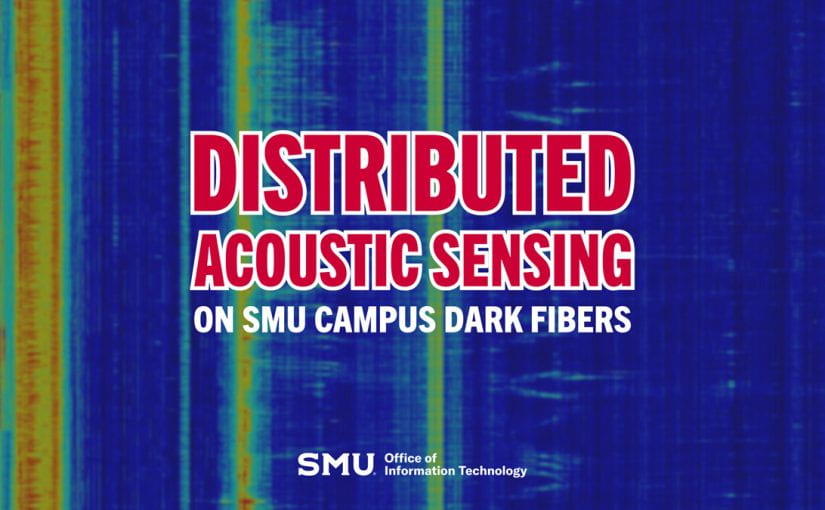With Special Reporting from Chris Hayward, Department of Earth Sciences
![]() In the past several months, SMU’s Earth Sciences Department and SMU’s Office of Information Technology (OIT) networking have collaborated to test a new fiber optic interrogator that can measure tiny strains, the result of seismic noise from traffic, along with up to 100km of fiber optic cable. This technique is called Distributed Acoustic Sensing (or DAS). The first round of testing, which started just before the beginning of the Fall 2023 semester, viewed changes in the seismic noise as a result of students returning to campus and of the seismic noise generated as a result of the semester’s first football game.
In the past several months, SMU’s Earth Sciences Department and SMU’s Office of Information Technology (OIT) networking have collaborated to test a new fiber optic interrogator that can measure tiny strains, the result of seismic noise from traffic, along with up to 100km of fiber optic cable. This technique is called Distributed Acoustic Sensing (or DAS). The first round of testing, which started just before the beginning of the Fall 2023 semester, viewed changes in the seismic noise as a result of students returning to campus and of the seismic noise generated as a result of the semester’s first football game.
SMU’s campus fibers include a number of fibers that are reserved for future expansion but are currently unused for computer networking or telecommunications. Nathan Miller, OIT’s Senior Infrastructure Design Engineer, patched these fibers together into a back-and-forth path to build a fiber path of nearly 10 kilometers for testing that includes a fiber sampling the same ground area twice. This allows the seismic noise to be confirmed (since it appears twice) as independent of any extraneous noise.

Some of the fiber is buried along Airline Road, and can easily detect vehicle traffic. In earlier tests in Plano, it appeared possible to estimate the vehicle speed, weight, and number of wheels, but the complexity of heavy traffic made confirmation difficult. The test on campus, with lighter traffic will enable us to better recognize the capabilities of existing dark fiber for traffic characterization. In addition, the campus fiber loop, with its better-controlled environment, will allow researchers to better understand the capabilities and operation of the fiber interrogator (the brains of the technique) when it is time to do experiments in more remote areas.
A major challenge of operating a DAS for extended periods is the amount of data collected. The prior 1-week test in Plano resulted in collecting 1 TB per day on 100 km of fiber. Because the collected data contains a rich variety of signals and noise, reviewing such large datasets is a daunting task. The first SMU test is a smaller scale designed to produce a more manageable dataset (although a 100 GB/day dataset is still daunting).
This recent collaboration is yet another example of OIT working to make all of the technology resources at our disposal available for research and innovation in all disciplines.



